August 7, 2025
Understanding Sound Sensitivity in Autism: Challenges and Strategies
Sound sensitivity is a prevalent and often distressing feature for many autistic individuals, affecting their daily lives, emotional well-being, and social participation. This article delves into the neurobiological underpinnings, types, signs, and management strategies of sound sensitivities in autism to foster better understanding and support.
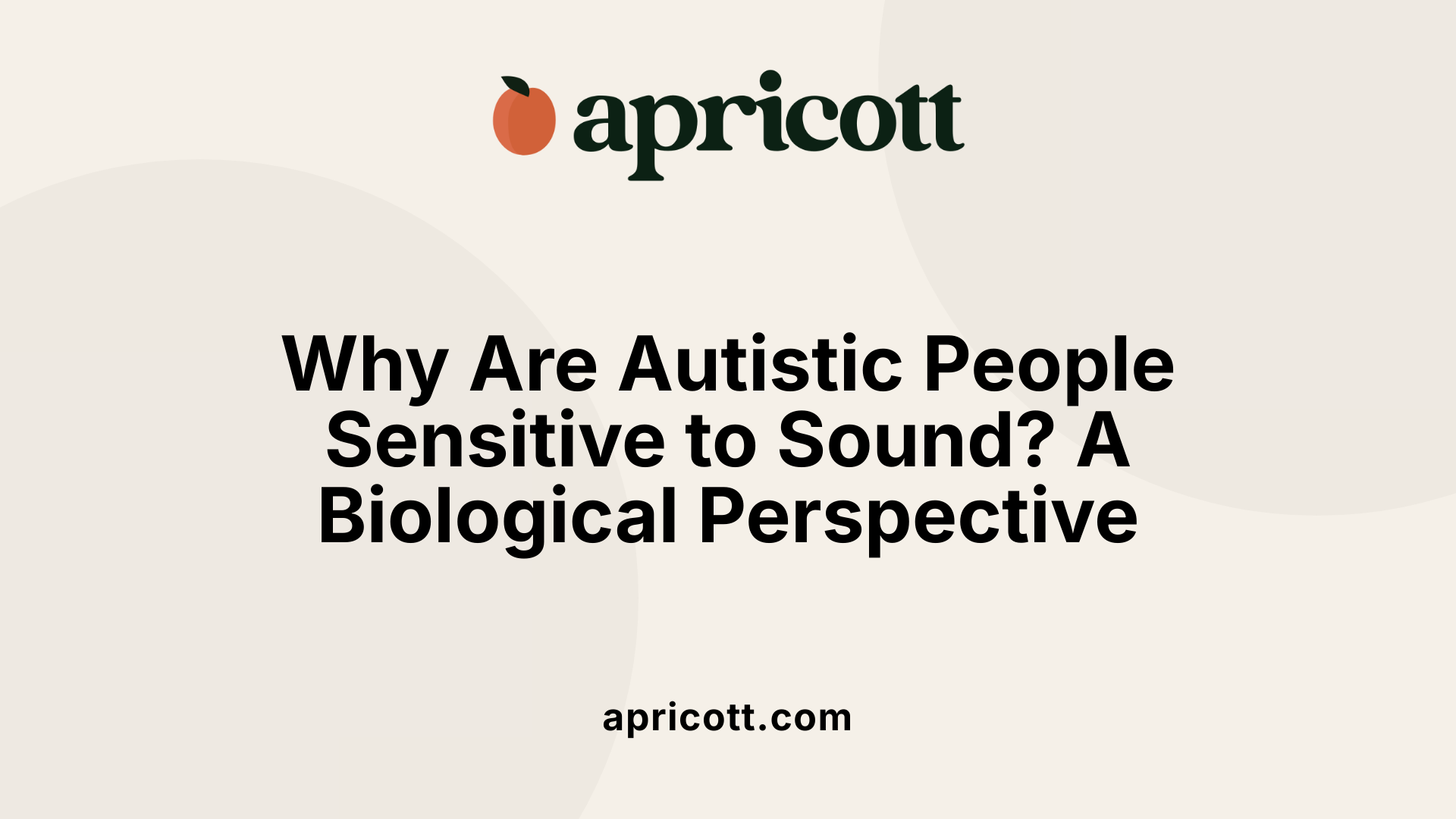
Autistic individuals often experience heightened sensitivity to sounds because of fundamental differences in how their brains process sensory information. Unlike neurotypical brains, which can filter out irrelevant stimuli efficiently, autistic brains may have difficulties with this filtering process. This leads to an over-awareness of background noises and a perception that sounds are louder or more intense than they actually are.
A common manifestation of this sensitivity is hyperacusis, a condition where everyday sounds can seem painfully loud or overwhelming. Research suggests that this is partly due to increased neural activity in the auditory pathways and certain brain regions involved in sensory processing.
Furthermore, the brain areas responsible for emotional responses, such as the amygdala and sensory cortices, show greater activity in autistic people when exposed to sounds. This hyperactivity can amplify responses, making sounds feel intolerable or distressing. The combination of sensory overload and emotional reactivity often results in discomfort, anxiety, or behavioral reactions like covering ears or fleeing noisy environments.
Another contributing factor is the reduced habituation to repeated sounds. Autistic individuals may not adapt as quickly to common noises, leading to persistent discomfort or distraction.
In sum, the sensory processing differences and heightened neural responses in certain brain regions explain why many autistic people are especially sensitive to sounds, profoundly affecting their daily lives and emotional health.
The neurobiological basis involves increased activity in areas such as the auditory cortex, amygdala, and other regions linked to processing sensory and emotional information. Some studies point to alterations in neural circuits involving excitatory and inhibitory pathways, leading to an imbalance that favors heightened responsiveness.
Genetic factors also influence sensory sensitivities. For example, mutations or deletions in genes like CNTN5 and CNTN6, which are associated with neural development, may heighten sound hypersensitivity. Additionally, structural differences in brainstem regions and the neural reflexes involved in sound modulation contribute to the level of sound sensitivity a person experiences.
Understanding these mechanisms is crucial for developing targeted interventions that can help manage sound sensitivities and improve quality of life for autistic individuals.
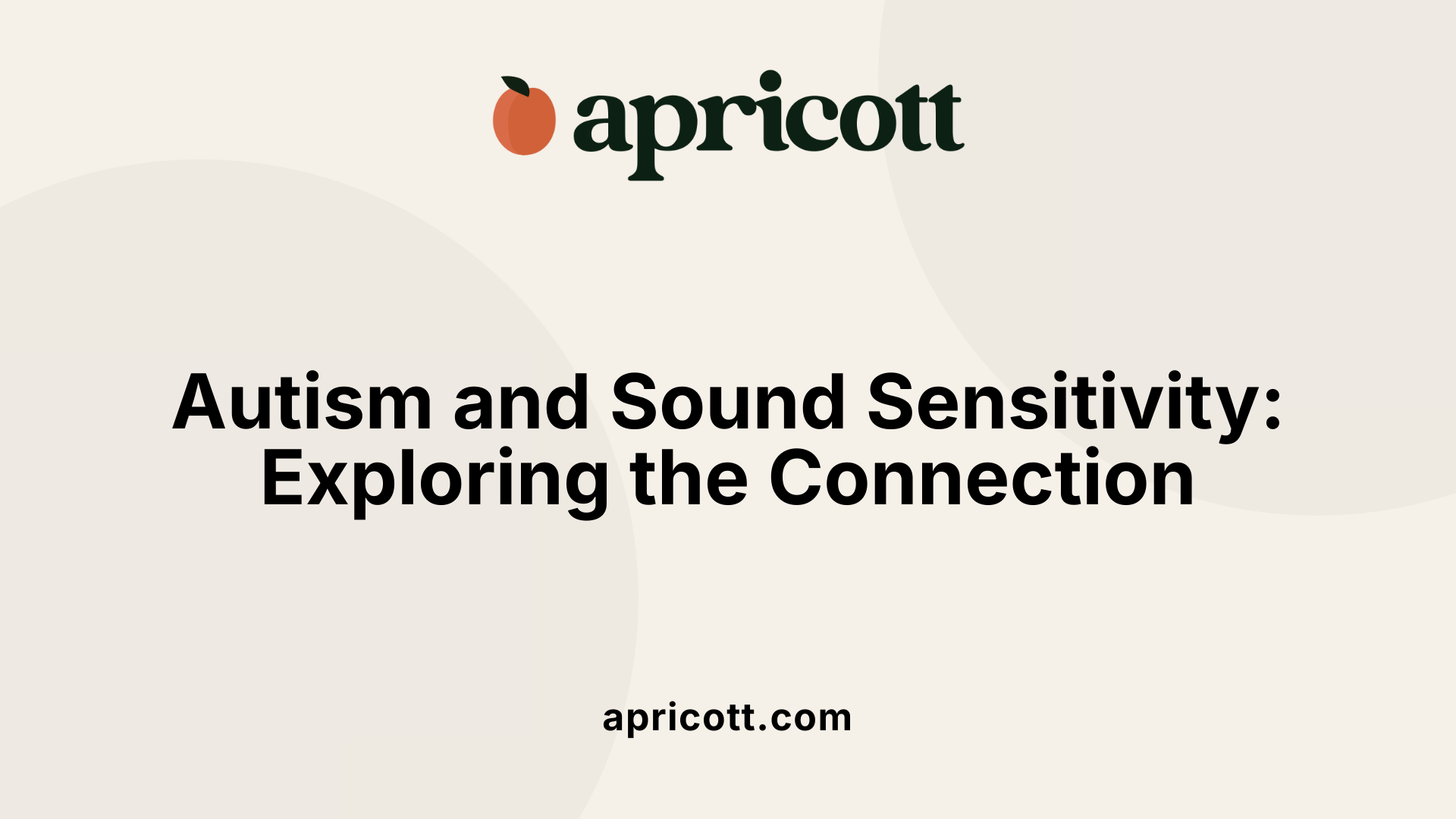
Sound sensitivity is a prevalent feature in individuals with autism spectrum disorder (ASD). Studies indicate that between 50% and 70% of autistic people experience heightened reactions to common sounds, such as loud, high-pitched, or sharp noises. This phenomenon, known as hyperacusis, can cause significant discomfort, leading to behaviors like covering the ears, withdrawal from noisy places, or meltdowns.
Research highlights that autistic individuals process auditory information differently from their neurotypical peers. Brain imaging studies reveal increased activity in regions responsible for sensory processing, such as the amygdala and sensory cortices, when exposed to sounds. These differences can make it challenging to filter irrelevant stimuli, resulting in sensory overload.
Sensory sensitivities in autism are often complex and vary among individuals. Some may display hyperreactivity, where sounds seem excessively loud or painful, while others may be hyposensitive, seeking out loud sounds or textures. Conditions like misophonia—aversion to specific trigger sounds—and phonophobia—the fear of particular sounds—also contribute to the diversity of sensory experiences.
Effective management strategies include environmental adjustments like quiet spaces and noise-canceling devices. Professionals may recommend occupational therapy, sensory integration techniques, or cognitive behavioral approaches to help individuals cope. While some therapies such as auditory integration training lack conclusive scientific evidence, environmental modifications and self-advocacy remain vital for improving daily functioning.
Understanding the sensory processing differences in autism helps in creating supportive environments that reduce distress and enhance participation in social and occupational settings.
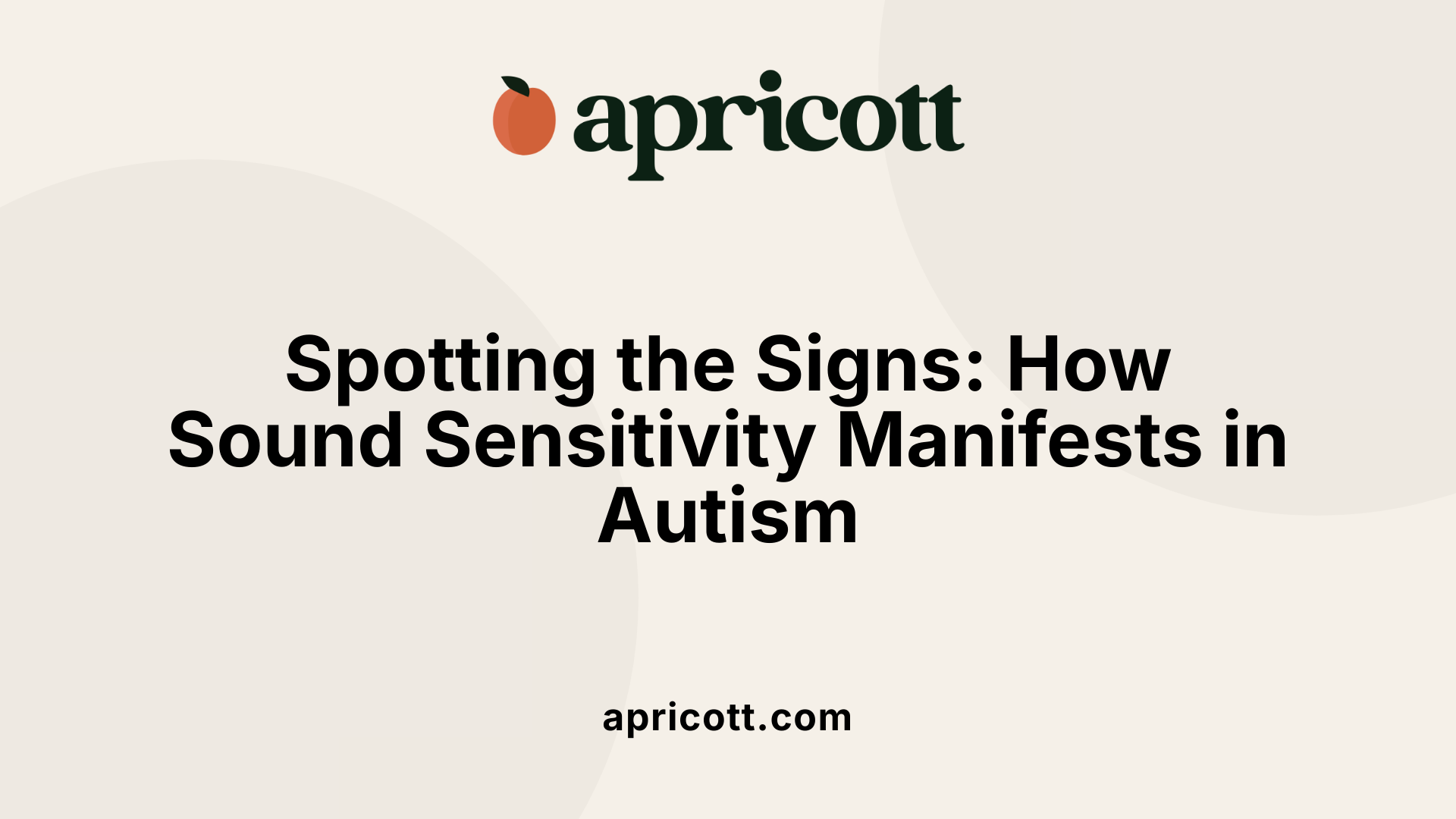
Autistic individuals often display specific behavioral and physical responses to sound that indicate hypersensitivity. Common signs include covering the ears to block out loud or distressing noises, avoiding environments with excessive noise such as busy stores or parties, and showing visible distress or discomfort when exposed to certain sounds.
Some individuals may overreact to stimuli, reacting strongly with crying, yelling, or covering their ears, especially to high-pitched or sudden noises. Others may underreact, seeming unresponsive or unaware of ambient sounds, which can also be characteristic of sensory differences in autism.
Meltdowns and emotional outbursts are frequent reactions when overwhelmed by noise. These may involve crying, yelling, or withdrawal. Additionally, behaviors such as heightened distractibility or seeking loud sounds (e.g., shouting or banging objects) are common.
Physical signs like increased movement, fidgeting, or stimming behaviors (such as rocking or finger flicking) often accompany sound sensitivities. Some individuals may also act out or withdraw from social interactions or routine settings as a way of managing sensory overload.
Identifying these signs is crucial for caregivers and educators to provide necessary accommodations. Creating quieter environments, using noise-canceling headphones, or allowing sensory breaks can help reduce distress and support better participation in daily activities.
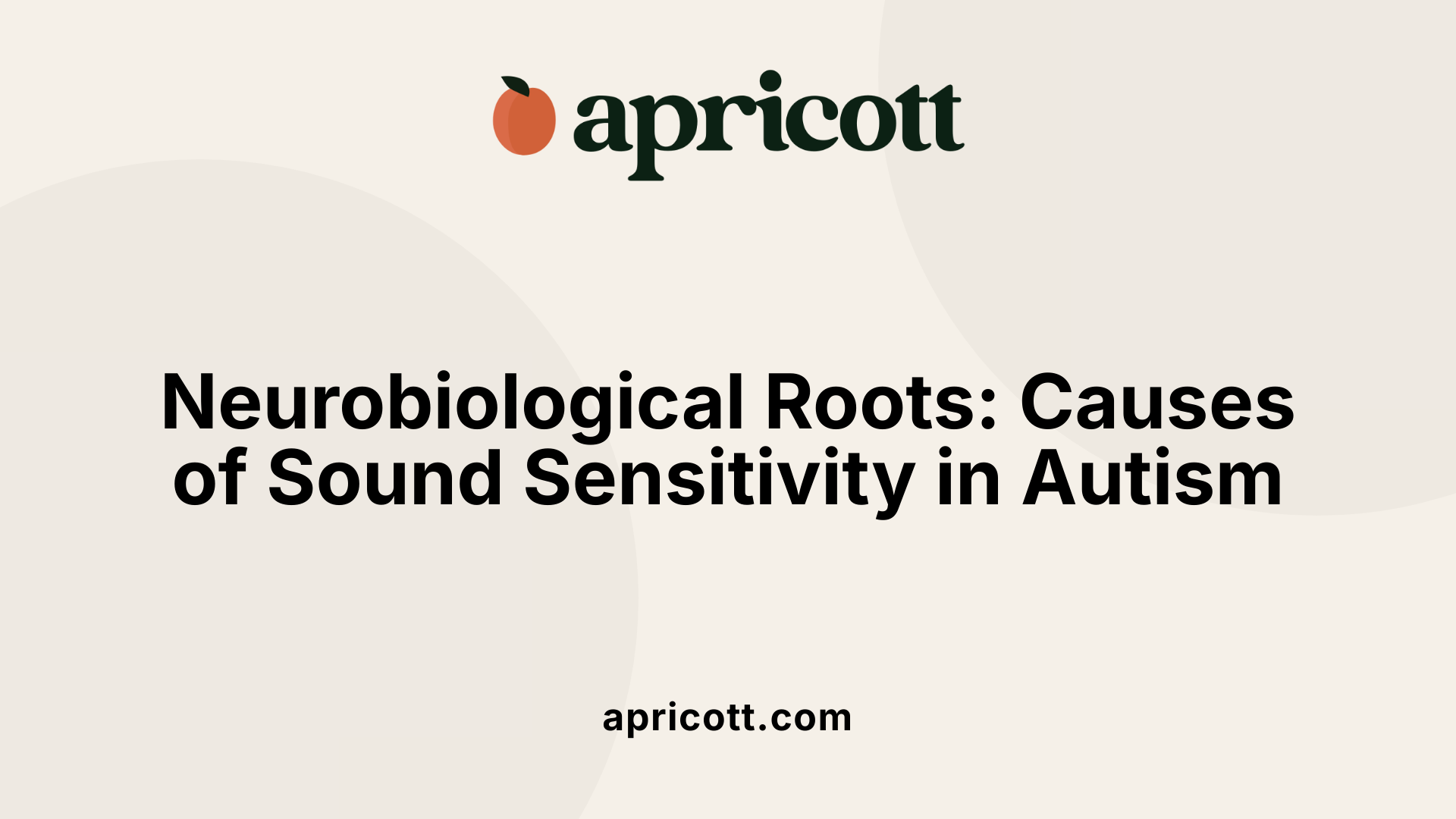
Sound sensitivities in autism stem from differences in how the brain processes sensory information. These neurobiological variations lead to exaggerated responses to auditory stimuli and contribute to conditions like hyperacusis, misophonia, and phonophobia.
Research shows that autistic individuals often exhibit increased activity in brain regions responsible for sensory processing, such as the sensory cortices, as well as the amygdala, which is involved in emotional responses. During sound exposure, these areas tend to activate more intensely than in neurotypical individuals, suggesting heightened neural reactivity.
Underlying these heightened responses are neurophysiological factors such as increased central auditory gain. This term refers to an amplification of auditory signals within the brain, which can make normal sounds seem louder and more overwhelming. This imbalance may be due to changes in neural circuitry, particularly in pathways responsible for inhibitory control, reducing the brain’s ability to filter out irrelevant or non-threatening stimuli.
Genetic influences also contribute to sensory sensitivities. Variations or mutations in genes like CNTN5 and CNTN6, which are involved in neural development and connectivity, have been linked to increased sound hypersensitivity in autistic populations.
Furthermore, autonomic nervous system responses are often stronger in autistic individuals, causing physical reactions such as increased skin conductance and heart rate when exposed to sounds. These physiological responses can intensify feelings of distress and contribute to behavioral reactions such as covering ears or fleeing.
In summary, sound sensitivities in autism originate from complex interactions among altered neural circuitry, increased excitability of sensory pathways, diminished inhibitory control, and genetic factors. These neurobiological mechanisms cause the brain to overreact or under-filter sensory input, leading to the discomfort and behavioral challenges associated with auditory hyperreactivity.
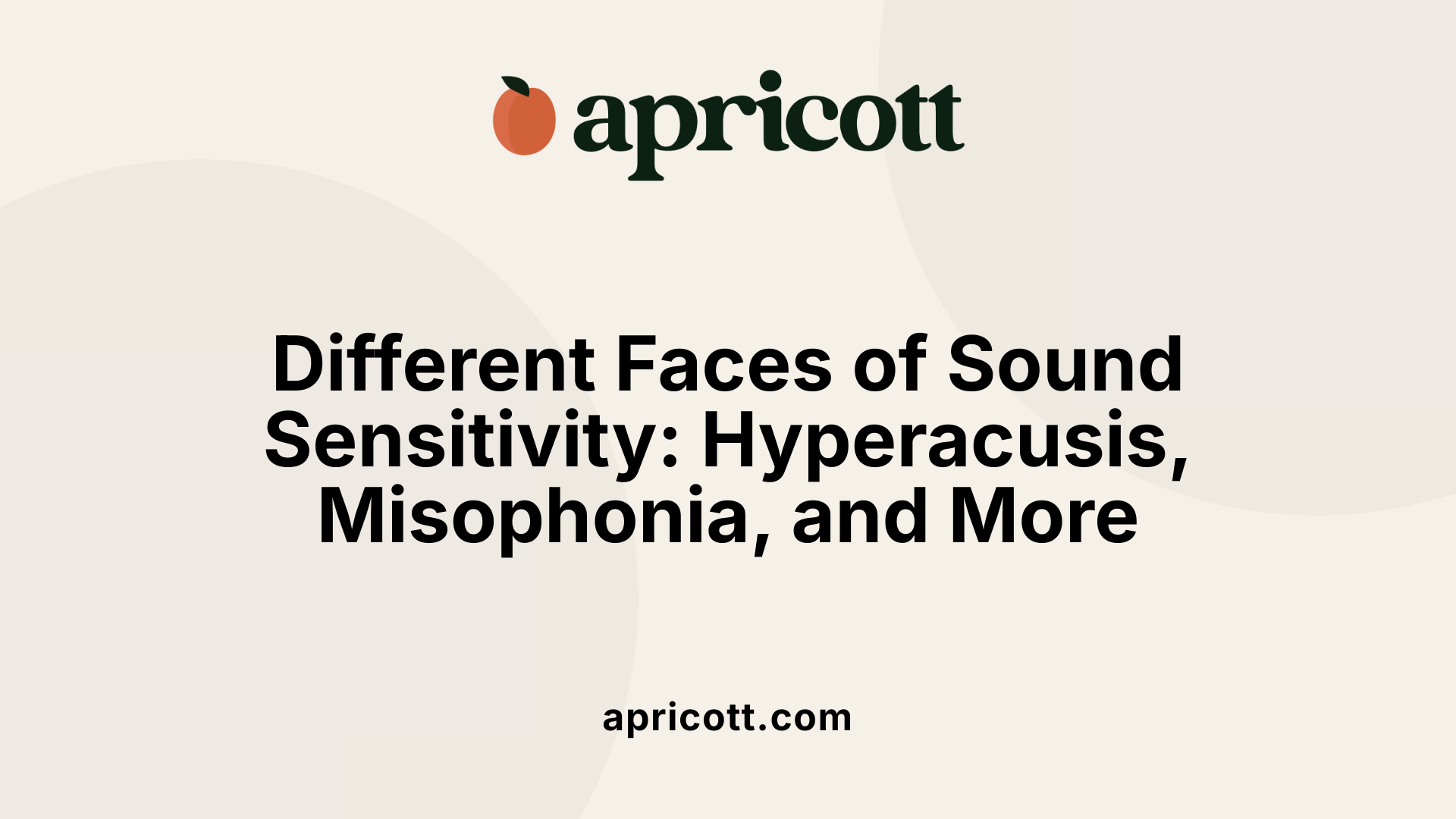
Many autistic people experience a wide spectrum of auditory sensitivities, which can significantly impact their daily lives. The most common form is hyperacusis, a decreased tolerance for loud or normal everyday sounds, often perceived as painful or overwhelming. For example, the sound of a dishwasher or a door slamming might cause discomfort or even distress.
Another common condition is misophonia, where specific trigger sounds, such as chewing, tapping, or pen clicking, provoke strong emotional reactions like anger, disgust, or anxiety. These responses are often intense and can activate neurological pathways linked to emotional processing.
A third type is phonophobia, or fear of certain sounds, which may develop as a learned aversion or anxiety response. Individuals with phonophobia might experience heightened worry or avoidance behaviors when confronted with particular noises.
Research using brain imaging has shown that autistic individuals often process auditory information differently. Some display increased activity in brain regions involved in sensory processing and emotional regulation when exposed to sounds. This heightened activity can lead to sensory overload, where irrelevant or minor sounds become overwhelming.
Behaviorally, those affected might cover their ears, leave noisy environments, or become agitated in response to loud or triggering sounds. These reactions are often signs of their attempt to cope with excessive sensory input.
The prevalence of sensory over-responsiveness in autism is high, with studies indicating that a significant percentage—ranging from about 30% to over 90%—experience some form of auditory hypersensitivity. In many cases, these sensitivities contribute to anxiety, social withdrawal, or meltdowns if not properly managed.
Management strategies typically involve environmental adjustments such as quiet spaces, use of noise-canceling headphones, and structured routines. Therapeutic options like occupational therapy with sensory integration techniques and cognitive-behavioral approaches can help individuals better process sounds and reduce distress.
Overall, understanding the different types of auditory sensitivities is vital to supporting autistic individuals effectively. Tailoring interventions and accommodations can greatly improve their comfort and participation in various settings, fostering a more inclusive environment.
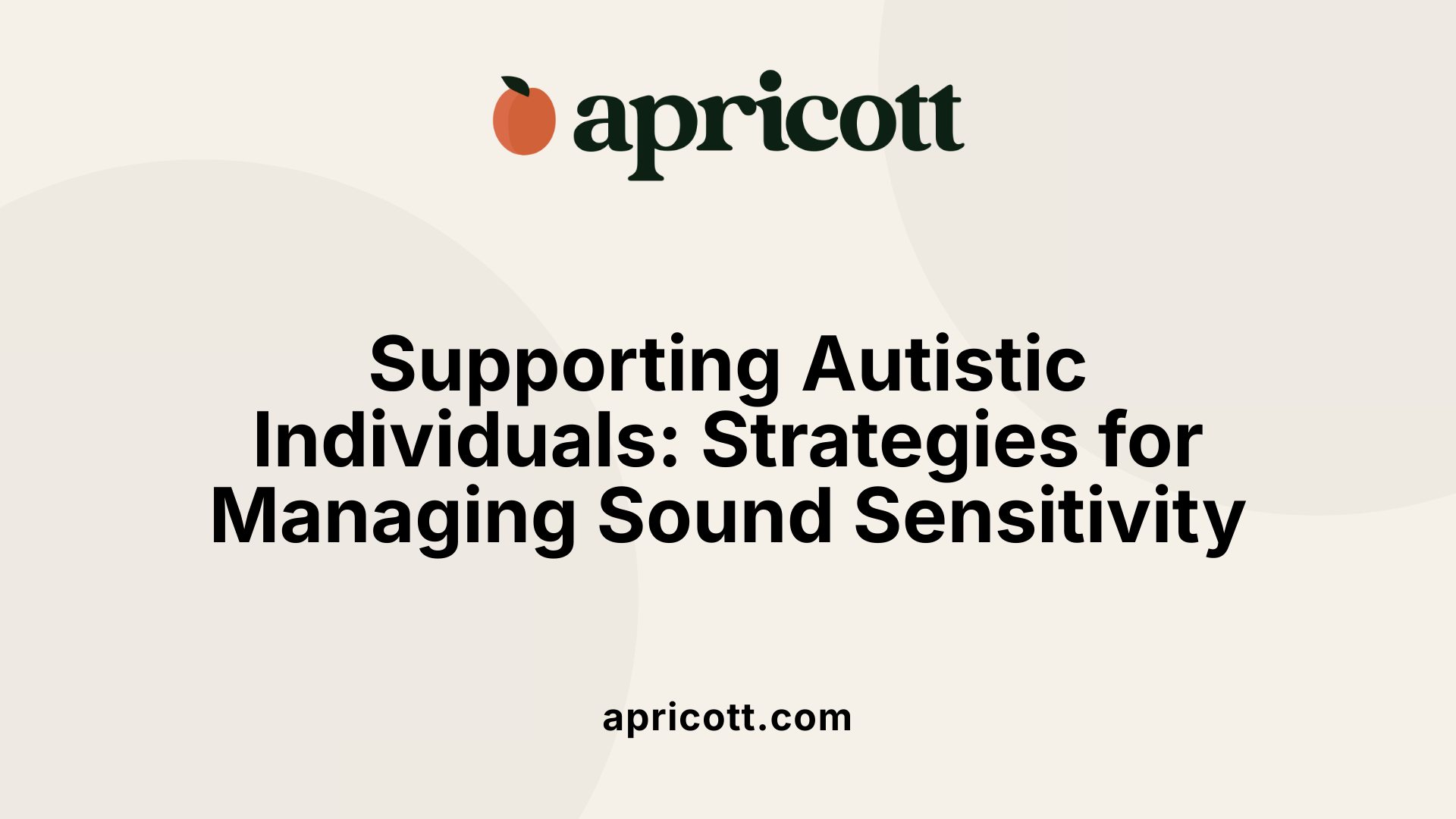
Managing sound sensitivity, also known as hyperacusis, in autistic individuals requires a combination of environmental adjustments, therapeutic interventions, and adaptive strategies.
Environmental modifications are fundamental. Creating quiet, low-stimulation spaces offers relief from overwhelming noises. Using soundproofing materials in homes or schools can help reduce ambient noise levels. Noise-canceling headphones and earplugs are practical tools that individuals can use to minimize exposure to loud or distressing sounds, especially in busy or unpredictable settings.
Therapeutic approaches can further improve coping abilities. Occupational therapy and sensory integration therapy focus on helping individuals process sensory stimuli more comfortably. These therapies often include gradually exposing individuals to certain sounds in controlled environments to build tolerance over time.
Cognitive-behavioral therapy (CBT) is another effective method, especially for managing associated anxiety and emotional reactions triggered by noise sensitivity. CBT teaches coping skills, helps individuals reframe their responses, and develop relaxation techniques.
Desensitization techniques involve systematic exposure to troublesome sounds, starting with less intense stimuli and slowly increasing intensity, allowing the brain to adapt. This process, guided by professionals, can diminish the distress linked to specific noises.
Supporting emotional well-being is also essential. Validating feelings and preparing individuals for noisy situations through visual schedules or social stories can reduce stress. Educating caregivers, teachers, and peers about sensory sensitivities fosters understanding and patience.
Overall, working closely with specialists like audiologists and occupational therapists ensures that each person’s unique needs are met with tailored strategies. Combining environmental adjustments, therapeutic interventions, and emotional support forms a comprehensive approach to managing sound sensitivities in autism.
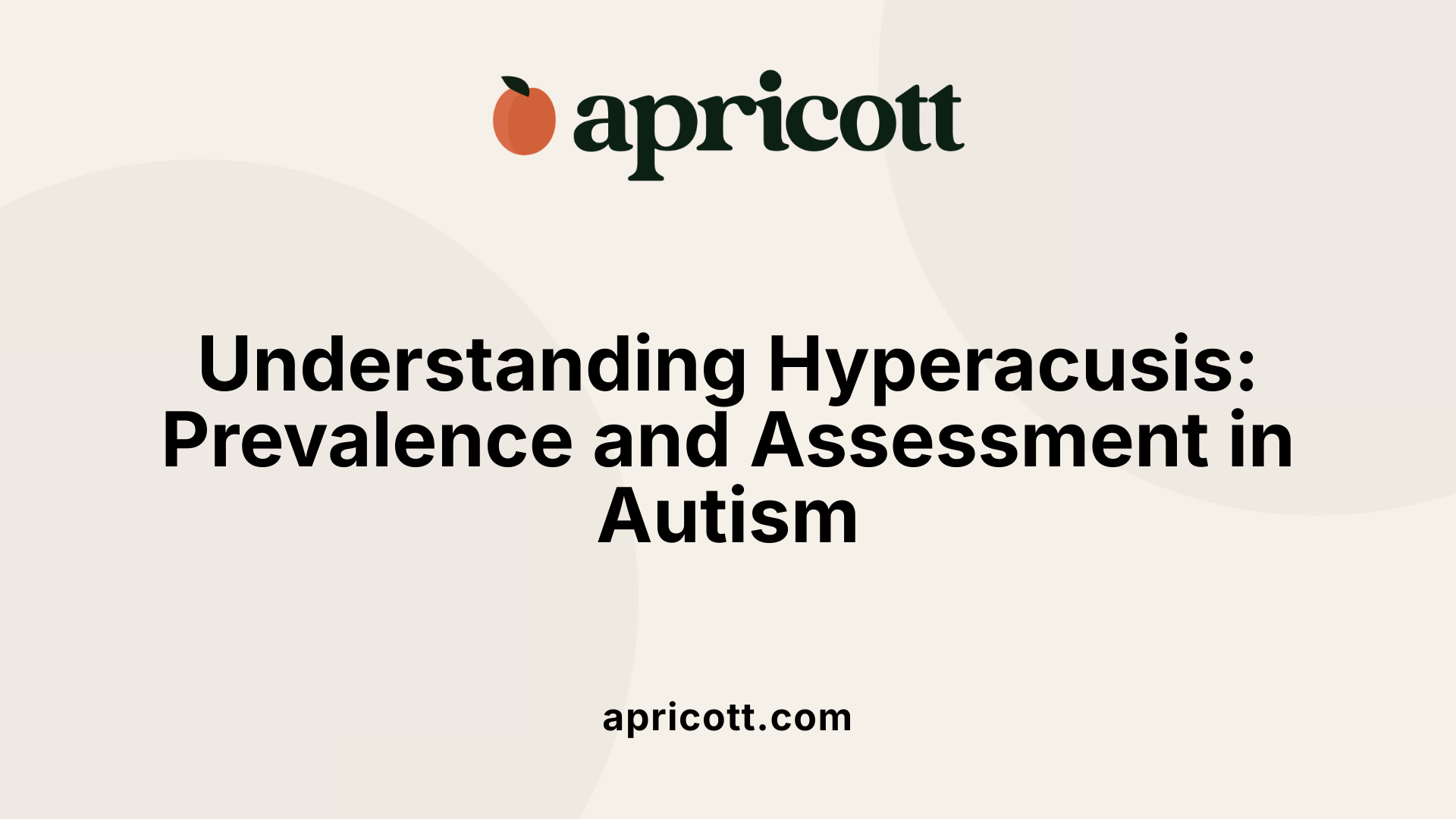
Hyperacusis, or decreased sound tolerance, is highly prevalent in the autism community. Studies estimate that between 18% to 69% of autistic individuals experience some form of hyperacusis, making it much more common than in the general population. This heightened sensitivity to everyday sounds can affect emotional wellbeing, sleep, concentration, and social interactions.
The condition often begins early in life and may continue into adulthood, contributing to anxiety and sensory overload.
To evaluate hyperacusis, clinicians use a variety of assessment tools. A comprehensive evaluation typically includes:
Average ULLs in those with hyperacusis tend to fall between 60 and 85 dB HL, compared to approximately 100 dB HL in neurotypical individuals. Combining these assessment methods provides a more accurate picture, especially since communication challenges can make behavioral reporting difficult. For this reason, caregivers' observations and behavioral assessments are also integral in diagnosis.
In summary, hyperacusis is a significant concern within the autism spectrum, and careful, multi-faceted evaluation is necessary to identify and plan appropriate management strategies.
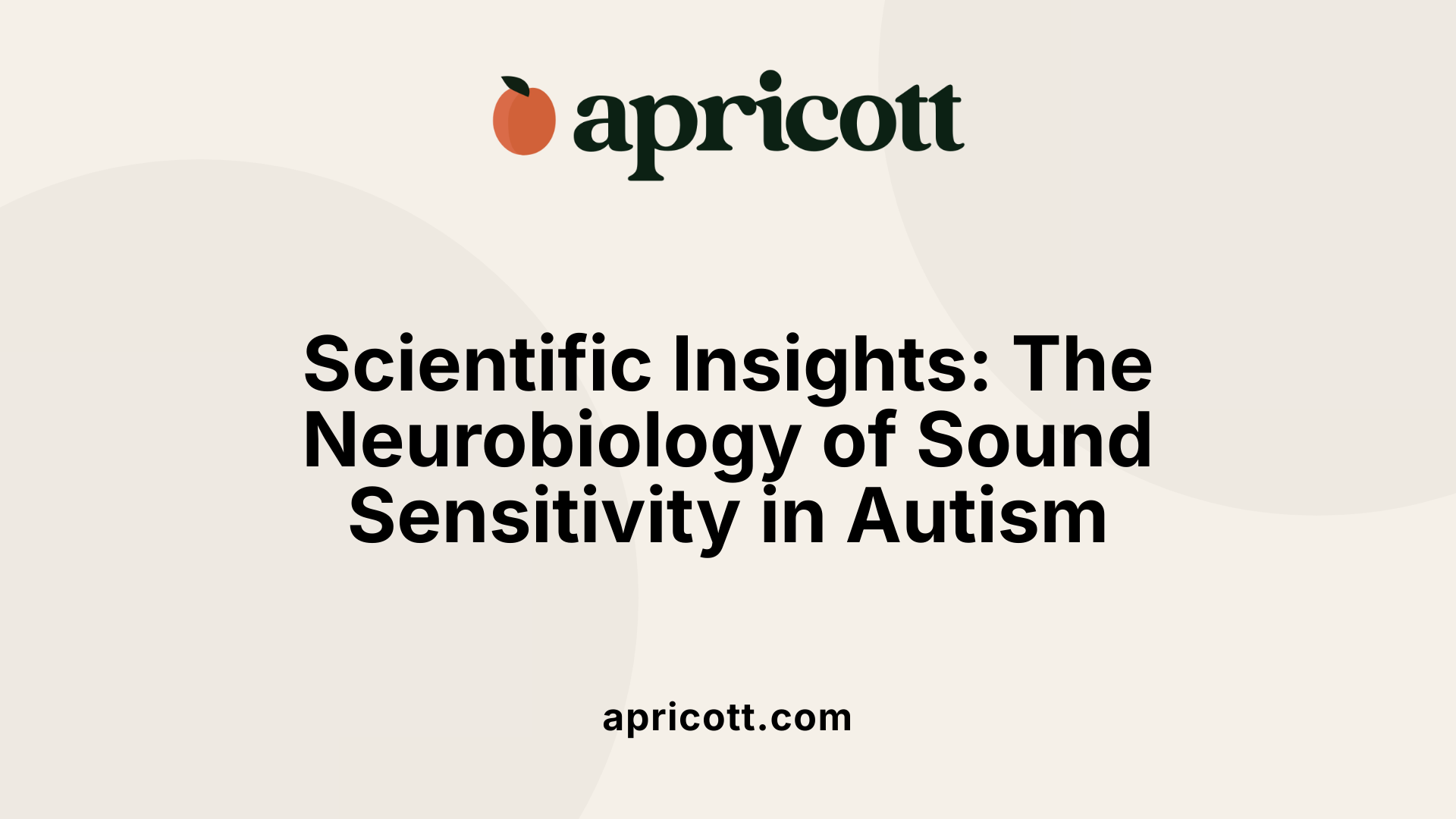
Recent scientific studies have shed light on the neurological basis of sound sensitivities experienced by many individuals on the autism spectrum. Brain imaging research has revealed that children with autism exhibit heightened activity in specific brain regions when exposed to sounds. Notably, areas involved in sensory processing, such as the auditory cortex, show increased activation. Increased activity has also been observed in emotional regulation centers like the amygdala, which may explain heightened emotional responses to sounds.
Studies using EEG and skin conductance measures demonstrate that children with autism often have altered habituation responses. Unlike typically developing children, they do not easily adapt to repeated noises, leading to ongoing sensitivity and discomfort. These physiological responses support the idea that autistic individuals have stronger autonomic reactions, such as increased skin conductance, which correlates with behavioral reactions like covering ears or withdrawal.
Neuroimaging also points to hyperactivation of neural networks responsible for processing salience and fear. This hyperactivity makes certain sounds more intrusive and distressing. The heightened sensory gain, possibly stemming from neural circuitry differences, results in either over-responsiveness, such as hyperacusis, or misophonia, where specific sounds trigger intense emotional reactions.
Genetic studies further suggest that mutations in genes like contactin (CNTN5 and CNTN6) contribute to atypical neural connectivity underlying sound hypersensitivity. These genetic and neurophysiological findings emphasize that sensory sensitivities in autism are rooted in complex brain differences, not just behavioral responses.
Overall, ongoing research aims to better understand these mechanisms to inform targeted therapies. While some promising strategies are under investigation, current scientific evidence underscores the importance of considering neurobiological factors when addressing sound sensitivities in autism.
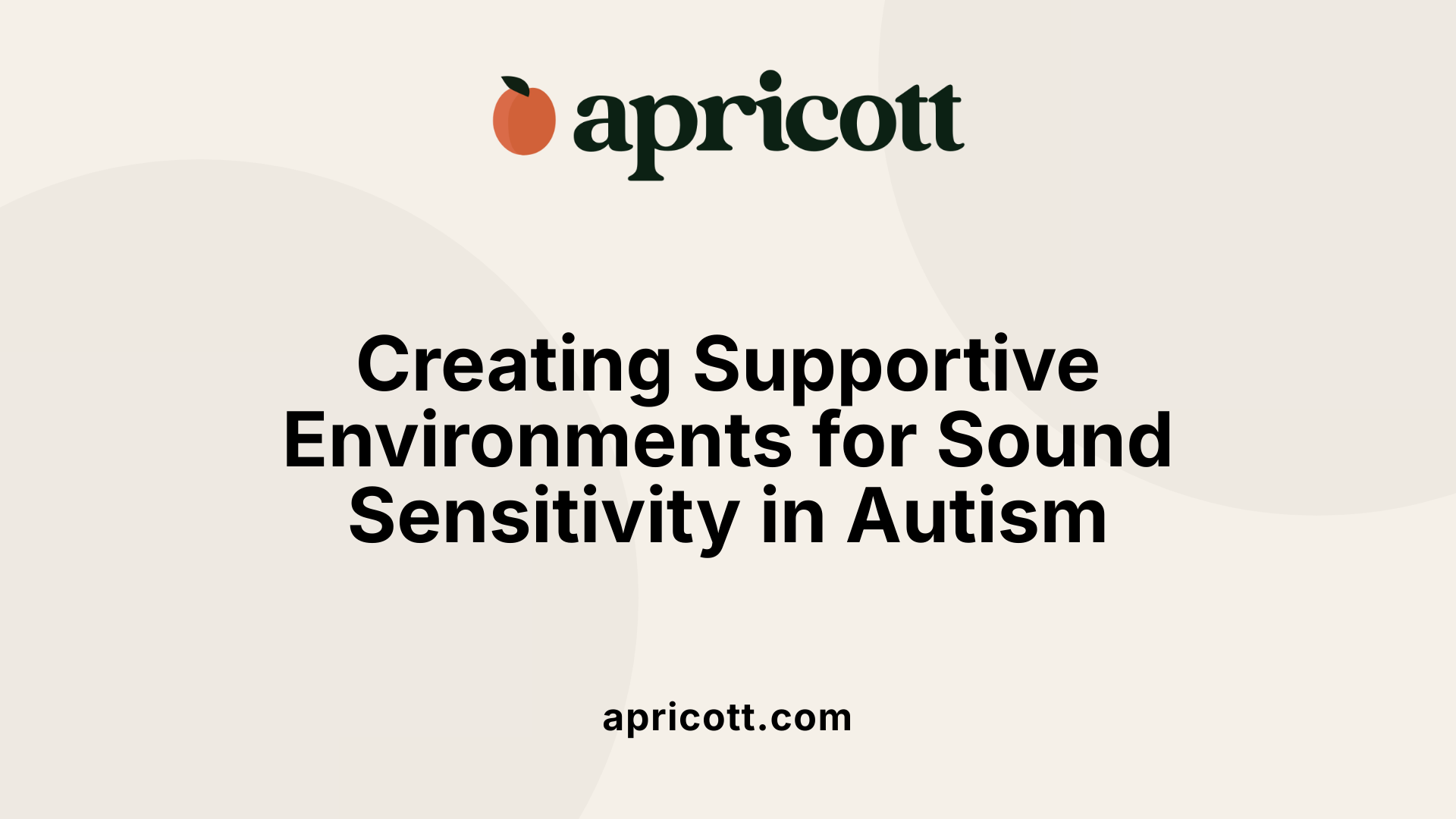
Supporting autistic individuals with sound sensitivities requires a comprehensive approach that combines environmental modifications, education, therapy, and emotional validation.
First, creating supportive environments plays a crucial role. This involves reducing background noise in homes, schools, and workplaces, and providing access to noise-canceling headphones or earplugs. Developing quiet, sensory-friendly spaces where individuals can retreat when overwhelmed can significantly reduce distress.
Educational programs aimed at caregivers, teachers, peers, and the wider community help increase awareness about sensory processing differences. When others understand that behaviors like covering ears, avoiding noisy environments, or becoming agitated are natural responses to hypersensitivity, empathy and support improve.
Preparing individuals for potentially noisy situations through visual aids, social stories, and gradual exposure can foster better management of sensitivities. For example, previewing a noisy environment before visiting it allows the individual to brace for the sensory input.
Therapeutic interventions are essential for building sound tolerance. Occupational therapy, sensory integration approaches, and desensitization techniques such as gradual exposure to sounds can help reduce hypersensitivity over time. Although some therapies like auditory integration training lack strong scientific backing, tailored therapy plans supervised by qualified professionals often benefit the individual.
Additionally, emphasizing validation of feelings and emotional support helps individuals cope with their sensitivities. Teaching self-advocacy skills enables them to communicate their needs effectively, whether by requesting quieter settings or using tools like noise-canceling devices.
Involving multidisciplinary professionals like audiologists, speech therapists, and psychologists ensures a personalized support plan. These experts can assess sensory sensitivities and develop strategies aligned with the individual's specific challenges and strengths.
Overall, successful support hinges on combining environmental changes, educational efforts, therapeutic interventions, and emotional validation. This holistic approach fosters not only better management of sound sensitivities but also promotes self-confidence and independence for autistic individuals.
| Strategy | Description | Purpose |
|---|---|---|
| Noise reductions | Installing sound-absorbing materials, using earplugs, or headphones | Minimize sensory overload |
| Quiet spaces | Creating designated calm zones | Provide refuge during overstimulation |
| Environmental adjustments | Managing lighting, scents, and textures in surroundings | Reduce additional sensory triggers |
| Strategy | Description | Impact |
|---|---|---|
| Awareness training | Educating community members and educators | Foster understanding and accommodation |
| Visual supports and social stories | Preparing individuals for upcoming noisy situations | Reduce anxiety and promote coping skills |
| Peer support and advocacy | Encouraging self-advocacy and peer understanding | Empower individuals and promote inclusion |
| Strategy | Description | Benefit |
|---|---|---|
| Teaching communication skills | Helping individuals express their sensory needs and limits | Greater independence and reduced frustration |
| Self-awareness education | Raising awareness about personal sensory profiles | Better self-management and advocacy |
| Use of sensory tools | Supporting individuals in managing sensitivities through tools like weighted blankets, sensory toys | Increased comfort and control |
| Approach | Description | Advantages |
|---|---|---|
| Interdisciplinary teams | Combining efforts of audiologists, therapists, psychologists | Holistic support tailored to needs |
| Regular assessments | Monitoring sensory sensitivities and adjusting strategies as needed | Ensures evolving needs are addressed |
| Family and caregiver involvement | Engaging families in planning and support efforts | Reinforces consistent strategies and emotional stability |
Understanding and addressing sound sensitivities in autistic individuals involves a blend of environmental modifications, education, therapy, and emotional support. Implementing these strategies enhances their quality of life, promotes independence, and fosters inclusive communities. The integration of personalized care plans, community awareness, and self-advocacy is vital for meaningful progress.
By understanding the neurobiological and behavioral aspects of sound sensitivities in autism, caregivers, educators, and clinicians can better support affected individuals. Implementing tailored strategies, fostering an environment of understanding, and promoting research into effective therapies will improve quality of life and facilitate greater inclusion for autistic individuals facing sensory challenges.